Abstract
2-[4-(3,4-Dichlorophenylureido)phenoxy]-2-methylpropionic acid, LR16, combines with two symmetrically related sites in the central cavity of deoxyhemoglobin, 20 A away from the binding site of 2,3-bisphosphoglycerate, and acts as an allosteric effector synergistic with 2,3-bisphosphoglycerate. LR16 (1 mM) raises P50, the partial pressure of oxygen needed to achieve half-saturation with oxygen of a hemolysate of human hemoglobin, about 50 times more strongly than 1 mM 2,3-bisphosphoglycerate. Oral administration of LR16 (at small doses that produced no ill effects) to rats that were fed a diet rich in cholesterol caused substantial reductions of total serum cholesterol and low density lipoprotein-cholesterol, while high density lipoprotein-cholesterol remained unchanged.
Full text
PDF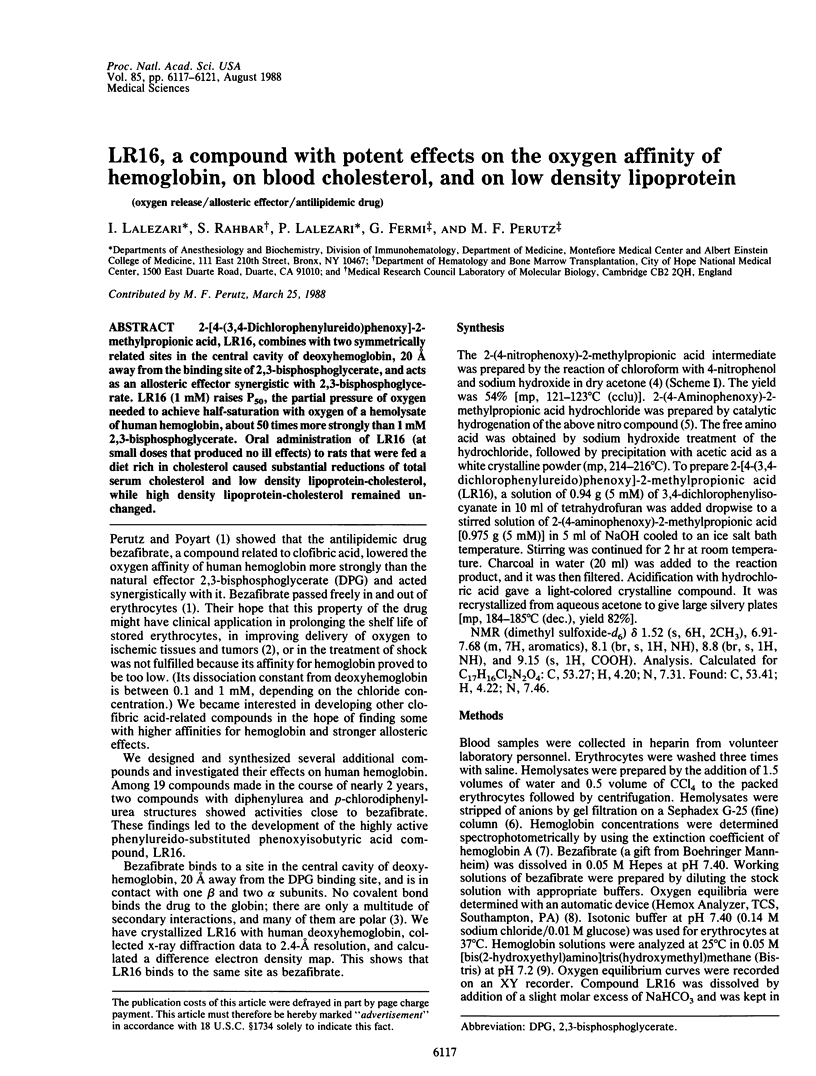
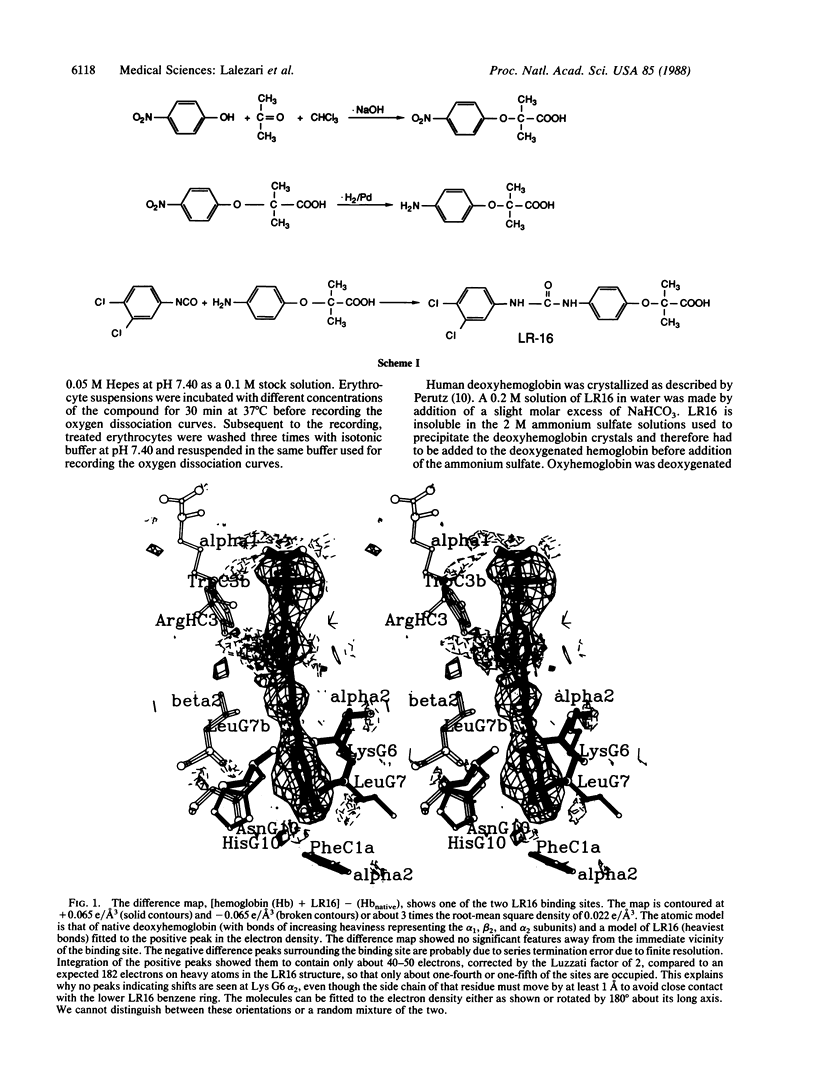
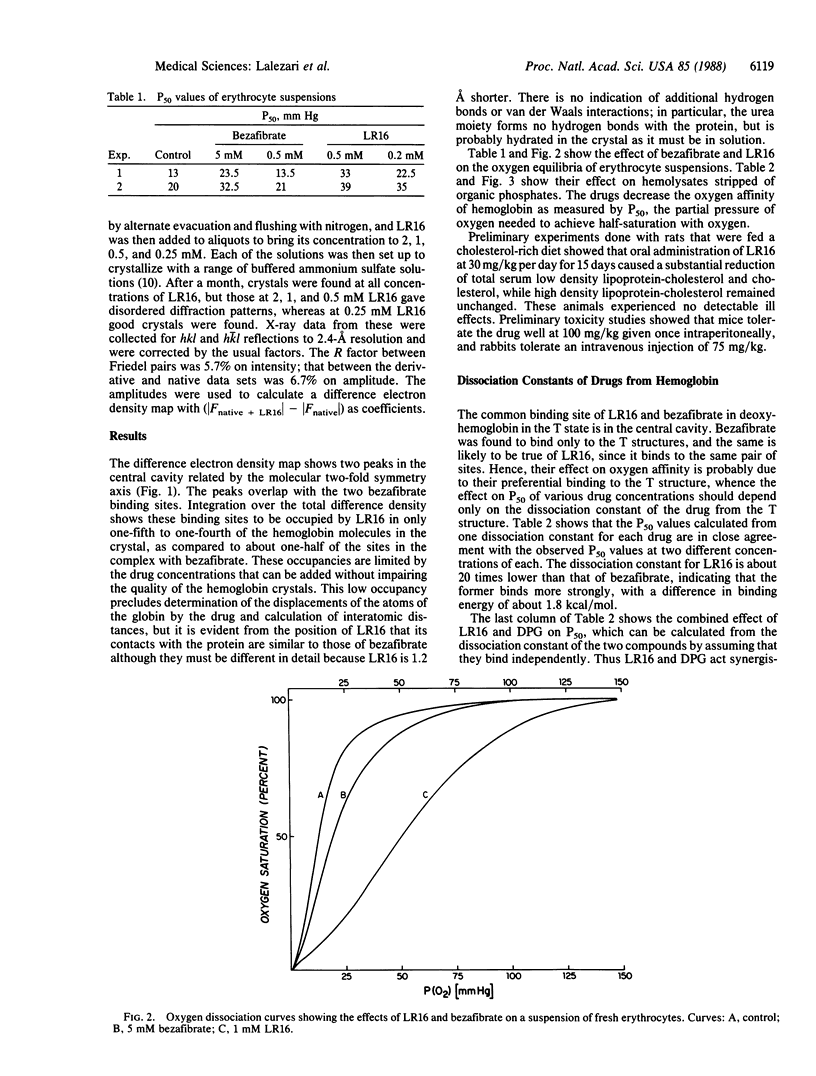
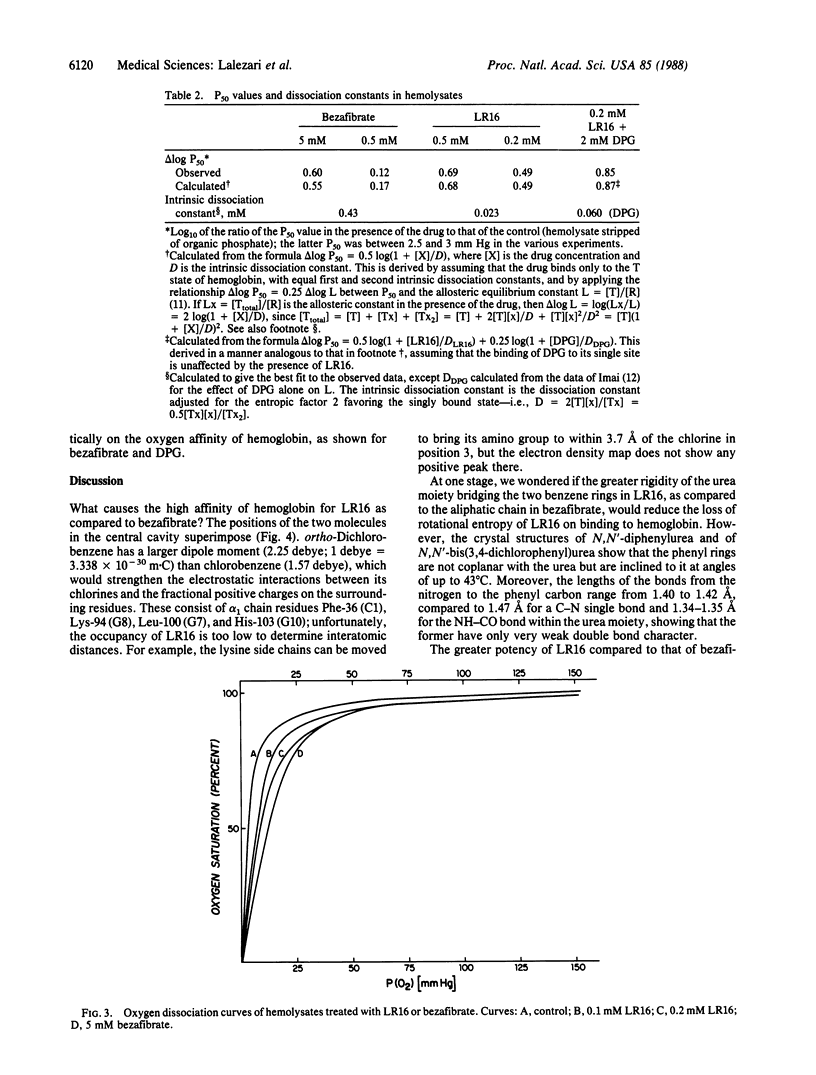
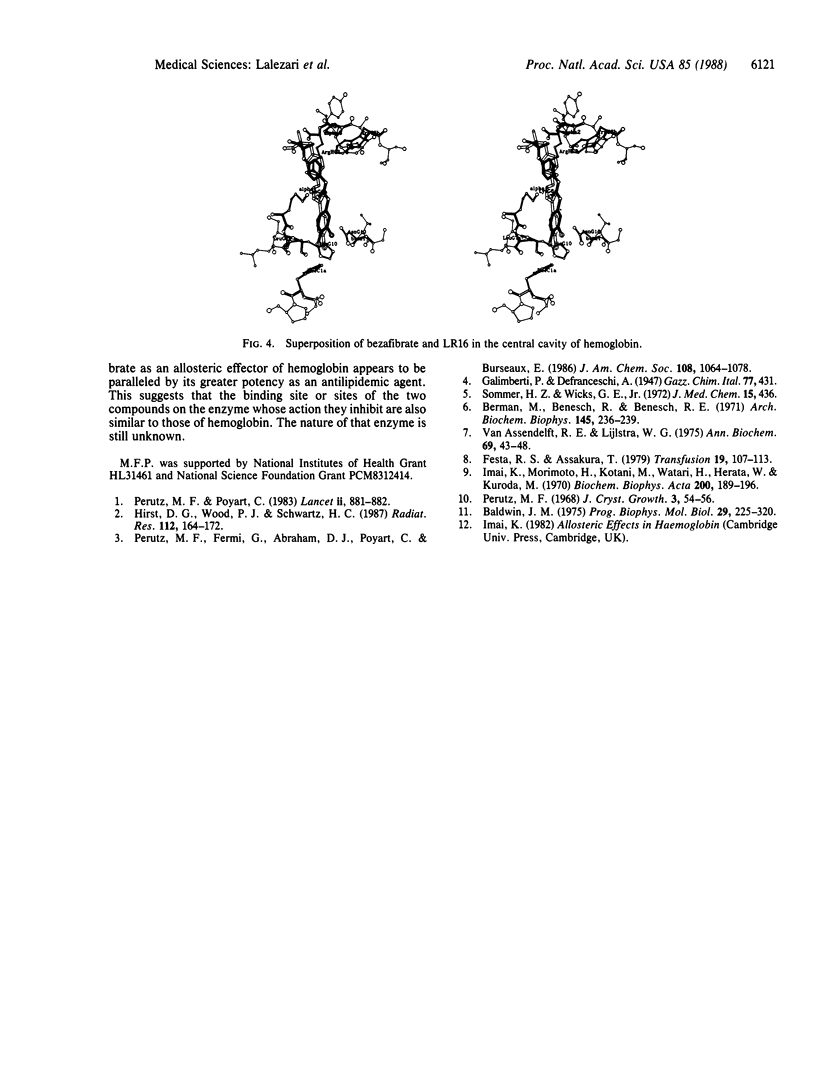
Selected References
These references are in PubMed. This may not be the complete list of references from this article.
- Baldwin J. M. Structure and function of haemoglobin. Prog Biophys Mol Biol. 1975;29(3):225–320. doi: 10.1016/0079-6107(76)90024-9. [DOI] [PubMed] [Google Scholar]
- Berman M., Benesch R., Benesch R. E. The removal of organic phosphates from hemoglobin. Arch Biochem Biophys. 1971 Jul;145(1):236–239. doi: 10.1016/0003-9861(71)90031-2. [DOI] [PubMed] [Google Scholar]
- Festa R. S., Asakura T. The use of an oxygen dissociation curve analyzer in transfusion therapy. Transfusion. 1979 Mar-Apr;19(2):107–113. doi: 10.1046/j.1537-2995.1979.19279160278.x. [DOI] [PubMed] [Google Scholar]
- Hirst D. G., Wood P. J., Schwartz H. C. The modification of hemoglobin affinity for oxygen and tumor radiosensitivity by antilipidemic drugs. Radiat Res. 1987 Oct;112(1):164–172. [PubMed] [Google Scholar]
- Imai K., Morimoto H., Kotani M., Watari H., Hirata W. Studies on the function of abnormal hemoglobins. I. An improved method for automatic measurement of the oxygen equilibrium curve of hemoglobin. Biochim Biophys Acta. 1970 Feb 17;200(2):189–196. doi: 10.1016/0005-2795(70)90163-7. [DOI] [PubMed] [Google Scholar]
- Perutz M. F., Poyart C. Bezafibrate lowers oxygen affinity of haemoglobin. Lancet. 1983 Oct 15;2(8355):881–882. doi: 10.1016/s0140-6736(83)90870-x. [DOI] [PubMed] [Google Scholar]
- Sommer H. Z., Wicks G. E., Jr Potential antitumor agent dicyclohexylammonium 2-(4-N,N-bis(2-chloroethyl) amino)phenoxy)-2-methylpropionate. J Med Chem. 1972 Apr;15(4):436–437. doi: 10.1021/jm00274a036. [DOI] [PubMed] [Google Scholar]
- van Assendelft O. W., Zijlstra W. G. Extinction coefficients for use in equations for the spectrophotometric analysis of haemoglobin mixtures. Anal Biochem. 1975 Nov;69(1):43–48. doi: 10.1016/0003-2697(75)90563-1. [DOI] [PubMed] [Google Scholar]


